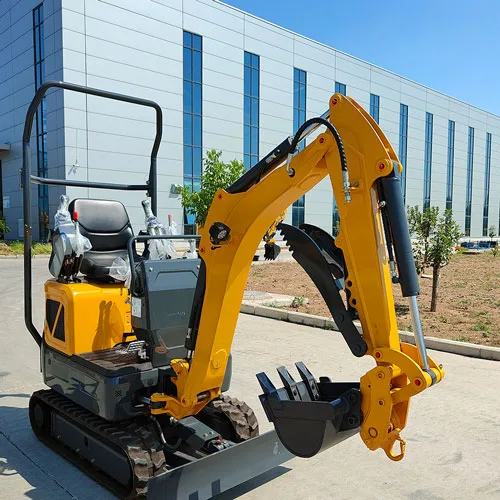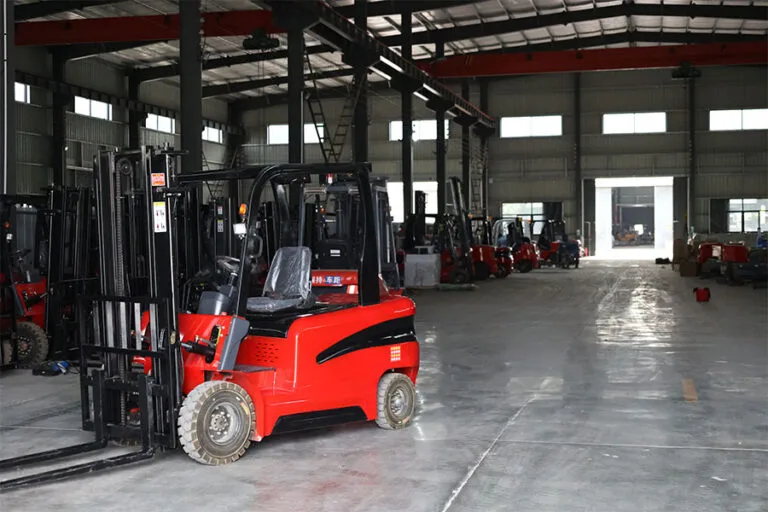I’m thrilled to have you here! Before we dive into the content, let’s stay connected. Join me on my social media platforms for more insights, community engagement, and regular updates. Here’s where you can find me:
📌 Facebook: Shandong Huaying International Trade Co., Ltd.
Now, let’s embark on this journey together. I hope you find the content here not only insightful and engaging but also valuable to your interests. Let’s learn, grow, and connect!
Table of Contents
Introduction

Selecting the right sit down electric forklift can significantly impact your operations, efficiency, and long-term investment returns. With the growing popularity of electric models due to their environmental benefits and low maintenance costs, many businesses are turning to sit down electric forklifts to streamline their warehouse and material handling operations. However, purchasing a sit down electric forklift without thorough research can lead to costly mistakes.
This comprehensive guide will highlight the seven most critical mistakes buyers make when selecting a sit down electric forklift. By understanding these pitfalls, you will be better equipped to make an informed decision and choose a forklift that meets both your current and future needs.
Understanding the Basics of a Sit Down Electric Forklift
Before diving into the mistakes, it is crucial to understand what makes a sit down electric forklift unique. Unlike traditional forklifts, a sit down electric forklift allows the operator to remain seated during operation, offering improved comfort during long shifts. Powered by rechargeable batteries, these forklifts are ideal for indoor use and environments where air quality is a priority.
Key benefits of a sit down electric forklift include lower operating costs, quieter performance, reduced emissions, and increased maneuverability. However, not all sit down electric forklifts are created equal, and purchasing the wrong model can quickly negate these advantages.
Mistake 1: Ignoring Your Specific Application Needs
One of the most prevalent missteps when acquiring a lifting vehicle is failing to thoroughly assess the unique demands of your workplace. Every operation differs in terms of load types, handling frequency, and spatial restrictions.
Factors you must evaluate include:
- Load Characteristics: Understand not just the average weight but also the size and shape of the loads you intend to move. Some units have limitations based on load dimensions rather than sheer weight.
- Operational Environment: Will the forklift be used indoors, outdoors, or in specialty environments like freezers or food-grade warehouses?
- Aisle Widths: Measure your warehouse or storage areas precisely. Tight spaces require models with smaller turning radii.
- Usage Patterns: Estimate how many hours per day the equipment will operate. High usage demands machines designed for extended, uninterrupted performance.
Choosing the wrong model can either constrain your operations or unnecessarily inflate your budget. Taking the time to match the machine’s capabilities to your real-world needs ensures enhanced productivity and longer equipment lifespan.
Mistake 2: Overlooking Battery and Charging Needs
Many buyers underestimate how crucial the battery system is to the performance of an electric-powered forklift. Unlike internal combustion models, these vehicles depend entirely on battery strength to function efficiently throughout the day.
Important considerations include:
- Battery Capacity: Select a capacity that aligns with your daily workload. Inadequate capacity could cause mid-shift shutdowns, disrupting workflow.
- Charging Speed: Fast-charging options are valuable for intensive operations but may require special infrastructure.
- Backup Batteries: Having an extra battery ready can drastically minimize downtime during high-demand periods.
- Charging Infrastructure: Plan for charger placement to maximize efficiency and ease of access. Ensure compatibility between chargers and the battery type selected.
Here’s a table summarizing these key points:
| Battery Feature | Importance | Recommended Practice |
|---|---|---|
| Battery Capacity | High | Match with daily operating hours |
| Charging Speed | High | Choose fast-charging models if needed |
| Spare Battery Availability | Medium | Keep backups to avoid downtime |
| Charging Infrastructure | High | Plan charging stations near operating areas |
Evaluating these factors carefully can significantly impact your fleet’s reliability and overall workflow.
Mistake 3: Neglecting Ergonomics and Operator Comfort


A commonly overlooked element during the purchasing process is the human factor — the operator’s experience. An uncomfortable or poorly designed forklift can lead to reduced operator efficiency, increased injury risks, and overall dissatisfaction.
Essential ergonomic features to look for include:
- Seating Comfort: Seats should offer ample lumbar support and adjustable settings to fit various body types.
- User-Friendly Controls: Controls must be intuitively placed, reducing the need for awkward movements.
- Visibility: Clear sightlines from the driver’s seat ensure safer operations, especially when maneuvering in tight spaces.
- Low Vibration Levels: Excessive vibration can cause operator fatigue and long-term musculoskeletal issues.
- Smooth Steering Systems: Responsive steering makes handling easier and reduces operator strain.
Investing in a unit that prioritizes operator well-being can boost morale, extend shift effectiveness, and minimize downtime caused by workplace injuries.
Mistake 4: Failing to Consider Maintenance and Serviceability
Many assume that electric-powered vehicles require minimal upkeep, which leads to neglect in planning for maintenance needs. In reality, while electric models are generally more reliable, they still demand periodic attention to avoid breakdowns.
Critical questions to ask during selection include:
- Parts Availability: How easy is it to obtain replacement parts?
- Brand Reputation: Is the manufacturer known for durability and reliability?
- Service Requirements: How often does the vehicle require servicing, and what does it involve?
- Local Support: Is there a qualified service center nearby that specializes in your chosen brand?
Opting for a forklift from a reputable manufacturer with a strong service network will help you minimize downtime and repair costs, ultimately safeguarding your operational continuity.
Mistake 5: Underestimating Total Cost of Ownership
Another serious mistake is focusing only on the initial purchase price without considering the total cost of Focusing solely on the upfront price tag can be misleading. A cheaper forklift may have hidden costs that outweigh its initial savings. A smarter approach is to consider the complete financial impact over the equipment’s useful life.
Key TCO components include:
- Energy Consumption: Efficient models save significantly on electricity costs over time.
- Battery Replacement: Batteries degrade and need periodic replacement, an expensive prospect if not properly anticipated.
- Repair and Maintenance Costs: Assess the historical maintenance track record of the brand and model.
- Depreciation: Some brands retain value better than others, which could impact resale opportunities.
- Operational Efficiency: Higher-performing models complete tasks faster, reducing labor costs.
By considering these broader financial aspects, you’ll be better equipped to make a cost-effective decision that benefits your business over the long haul.
Mistake 6: Not Training Operators Properly
EEven the most technologically advanced sit down model will underperform if handled incorrectly. Comprehensive operator training is essential not just for performance but also for safety.
The risks of insufficient training include:
- Increased Accidents: Untrained operators are more prone to mishandling loads or causing collisions.
- Higher Maintenance Costs: Improper use accelerates wear and tear, leading to premature repairs.
- Reduced Efficiency: Without a proper understanding of features and best practices, operators may work slower or less effectively.
Investing in professional training programs — preferably certified by regulatory authorities — ensures that your equipment is used safely and effectively from day one.
Mistake 7: Overlooking Safety Features

Safety should never be compromised. Some buyers make the mistake of opting for cheaper models that lack essential safety features. A reliable sit down electric forklift should be equipped with:
- Emergency stop buttons
- Stability control systems
- Seatbelt and operator presence systems
- Load backrests
- Warning alarms and lights
Prioritizing safety will protect both your employees and your equipment, creating a more secure working environment.
Conclusion
Choosing the right sit down electric forklift is a major investment that impacts operational efficiency, employee satisfaction, and overall profitability. Avoiding these seven critical mistakes can help you select a forklift that truly matches your needs and delivers excellent long-term value.
By carefully considering application needs, battery requirements, ergonomics, maintenance, total cost of ownership, training, and safety features, you will ensure that your sit down electric forklift becomes a valuable asset rather than a costly mistake. Take the time to research, consult with experts, and evaluate all options thoroughly before making a decision.
FAQ
What is the average lifespan of a sit down electric forklift?
The average lifespan of a sit down electric forklift ranges from 8,000 to 12,000 operating hours, depending on usage intensity, maintenance practices, and working conditions.
How often should a sit down electric forklift battery be replaced?
Typically, forklift batteries last about 5 years or 1,500 charge cycles. Regular maintenance and proper charging habits can extend battery life significantly.
Can sit down electric forklifts be used outdoors?
While primarily designed for indoor use, some sit down electric forklift models can be used outdoors on smooth surfaces and in mild weather conditions. However, rough terrains and harsh weather can affect performance.
What are the advantages of sit down electric forklifts compared to stand-up models?
Sit down electric forklifts provide greater operator comfort during long shifts, are easier to operate for extended periods, and are often preferred for longer travel distances within a facility.
How do I choose the right sit down electric forklift for my warehouse?
Choosing the right sit down electric forklift involves assessing load requirements, aisle width, battery needs, maintenance capabilities, and operator comfort preferences. Consulting a material handling expert can also ensure a better match.



